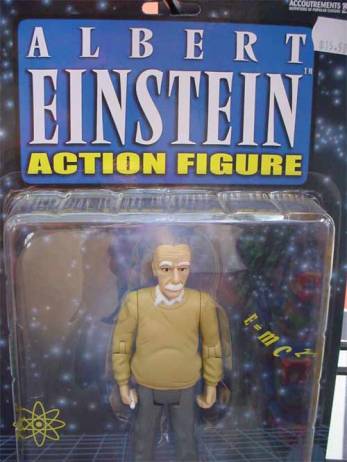
Science, technology & design
Future forecasts
In the future traffic forecasts will be as common as weather forecasts. There will also pollution forecasts, disease forecasts and war forecasts. In fact war-forecasting is already a growth industry with a number of players in countries such as the US, Germany and Australia. One of the leading systems used to predict military outcomes is a bit of software called the Tactical Numerical Deterministic Model - TNDM - which is produced by a military think-tank called the Dupuy Institute in Washington DC. TNDC is the mother of all battle simulators, largely because it successfully predicted the outcome (particularly casualty rates and duration) of the first Gulf War and also the Bosnian conflict. The accuracy of TNDM is largely due to the fact that the Dupuy Institute sits on a mountain of historical data from previous wars and has spent time analysing the influence of such factors as rainfall, foliage cover, length of supply lines, tank positions, river widths, muzzle velocities, density of targets and the nature of the regimes participating in the conflict (democratic or authoritarian). The result is a mathematical model that predicts outcomes, which is in turn used to deliver a three-page report on casualty rates, equipment losses, capture rates and terrain gains. What's even more astonishing is that this software is for sale at a cost of US $93,000 (including instruction, a year's technical support and a newsletter). Interestingly though, most people prefer the human touch and opt for the predictions plus human analysis. A future challenge is to predict the outcomes of guerrilla conflicts and the Dupuy Institute is apparently working on this. Given the success of business books like 'The Art of War', one wonders how long it will be before a corporation like Microsoft develops a similar model to predict the outcome of innovations or commercial strategies.
Ref: The Economist - Technology Quarterly (UK) 17 September 2005, 'And now, the war forecast'. www.economist.com
Unconventional biological sensors
Researchers at the University of Georgia (US) and the US Department of Agriculture have found a way to use wasps to detect plant diseases. The wasps are trained to associate certain odours with a food reward and, in theory, there is no reason why such 'sniffer wasps' cannot be trained to sniff out the odours associated with human diseases - such as lung cancer, stomach ulcers - or even to detect high explosives and illegal drugs. There is even talk of using the wasps to find buried human remains. The idea of using animals to sniff out target odours is nothing new - Sydney airport has been using dogs for years to detect illegal substances, and bees, fish and even yeast have been used in the past. Currently, a tiny camera linked to a computer records the activity of each group of wasps, which in turn triggers an alarm if unconventional movements are detected. Wasps and other 'sniffer insects' could be in commercial use by the year 2015.
Ref: vnunet (US) 24 October 2005, 'Sniffer wasps put dogs on the dole', R. Jaques. www.vnunet.com
Eye test to predict future illness
Despite all the technical wizardry that's available these days (or perhaps it's because of it) there seems to be a rise in the number of simple tests that are becoming available to detect disease. We've previously written about dogs (and potentially wasps) sniffing out cancer and here's another seemingly related story. A scientist in Australia has developed a simple eye test that can predict whether a person will suffer from a stroke in the future - even if other risk factors like high blood pressure are not present. A study of more than 3,000 people aged 50 and over found that people with retinopathy (lesions of the retina) were 300% more likely to have a stroke than people that did not. Apparently circulation in the eye and brain are very similar, so taking a picture of the eye gives doctors a pretty clear idea of what's happening inside the brain. For example, a damaged retina is likely to indicate damage to the arteries. In Australia, strokes are the third-biggest killer after heart disease and cancer.
Ref: The Australian (Aus), 11 October 2005, 'Eye test looks to predict future stroke victims', C. Pirani. www.theaustralian.com.au
Another light bulb moment
The humble light bulb has been a metaphor for bright ideas ever since it was co-invented by Thomas Edison and Joseph Swan back in 1879. Now a very bright graduate student in the US called Michael Bowers has accidentally invented an alternative. The new bulb is based on LED technology and lasts fifty times longer than a traditional bulb. The discovery was made when Bowers was experimenting with quantum dots. These are very small crystals that emit light when electricity is applied. The smaller the dots, the more energy that is realised and the brighter the resultant light.
Ref: Smarthouse (Aus), 22 October 2005, 'New invention makes light bulbs obsolete', D. Richards. www.smarthouse.com.au
